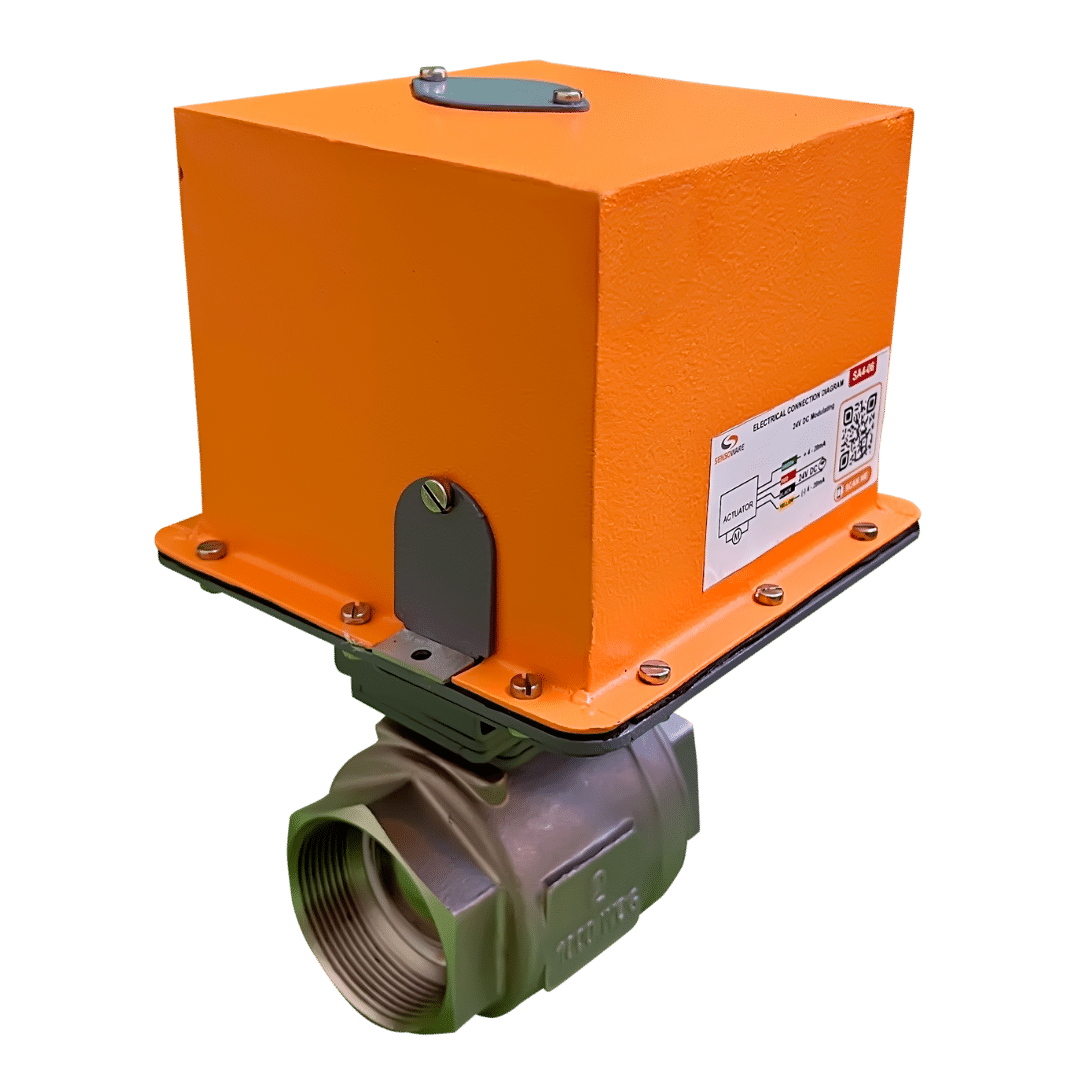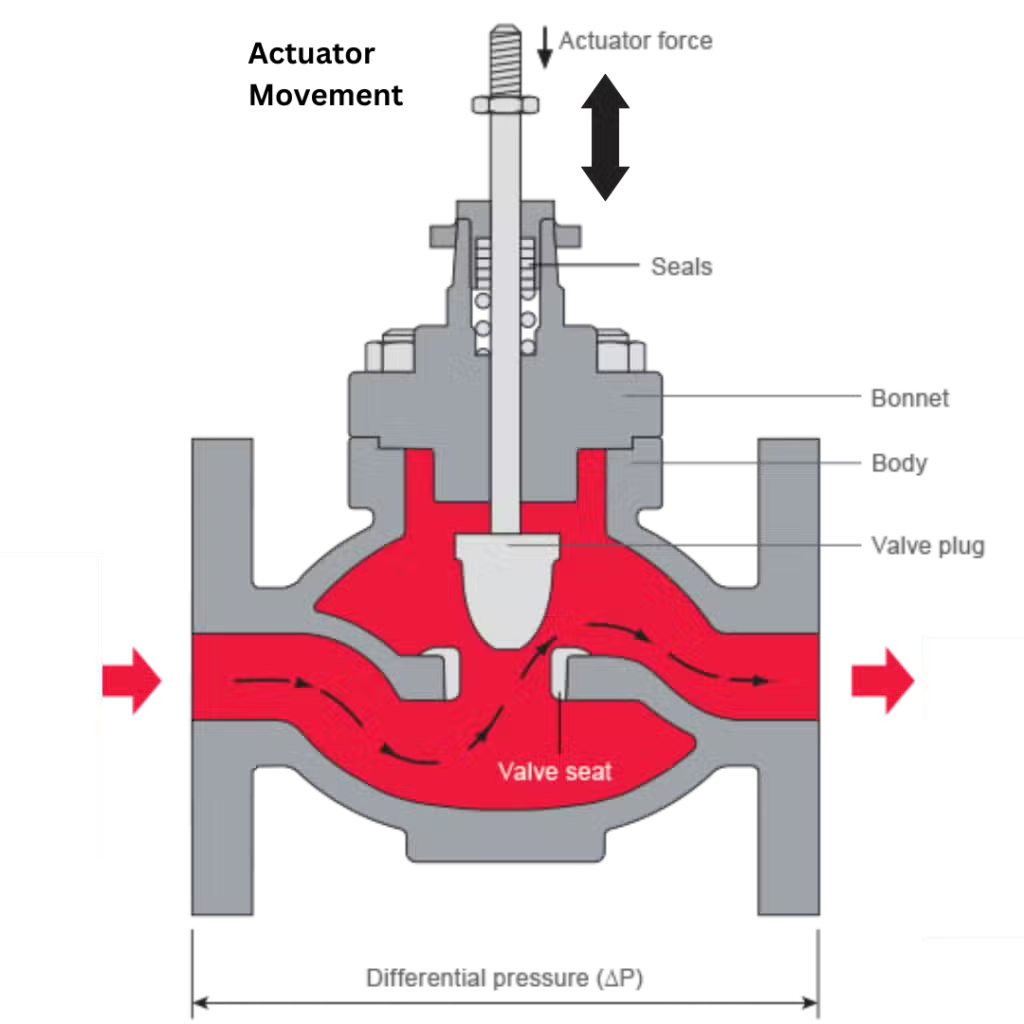Modulating Control Valves
Modulating control valves are automated valve that is used to control the amount of flow in a system or process. They go beyond simple shutoff or isolation (on/off) and actually allow precise control of the flow rate. The actuators on these valves use feedback and control signals to accurately open and close the valve.
A control signal is sent to the actuator to instruct it on how far to turn the valve stem. The control signal may be in the form of electrical voltage or electrical current. A 0-10 VDC electric signal will cause the actuator to completely closed the valve at 0 VDC, and completely open it at 10 VDC. Likewise a 4 to 20mA electrical signal will cause the actuator to completely close the valve at 4mA and completely open the valve at 20mA

Quarter turn Modulating Control Valves
Quarter-turn valves include ball valves, butterfly valves, and plug valves. These types are mostly used as on/off valves that rotate 90 degrees from on to off. They are also referred to as stop valves, shutoff valves, or isolation valves. They are either completely open (90°) or completely closed (0°).
Quarter-turn valves can also be used for modulating control. When used as a modulating control valve they have the added ability to be accurately positioned at any point between 0° and 90°. This adds the ability to control the amount of flow in addition to whether there is flow or not. This is done by adding a quarter-turn rotary actuator with modulating capabilities. These actuators can be either electrically operated.
Ball Valves
Ball valves require special modifications to be effectively used in control applications. Standard port and full port ball valves do not increase flow evenly in relation to their degree of rotation. There are two methods used to achieve a directly proportional increase of flow with regard to degree of rotation.
Butterfly Valves
Butterfly valves do a fairly good job as-is with no special consideration. In fact, most manually operated butterfly valves have multiple notches for the lever operator to lock into between the fully open and closed positions. The way a butterfly valve works does provide a gradual increase of flow throughout the 90 degree rotation.
Rising Stem Control Valves
Globe valves are one of the most commonly used for control applications. Globe valves have a disc shaped plug on the stem that is raised and lowered to control the degree of opening. They are ideally suited for control applications due to the internal construction, the way they operate, and the flow path.
Needle Valves are used for high pressure applications with precise control for managing differential pressures.

See in Action!
Follow our Social Channels
